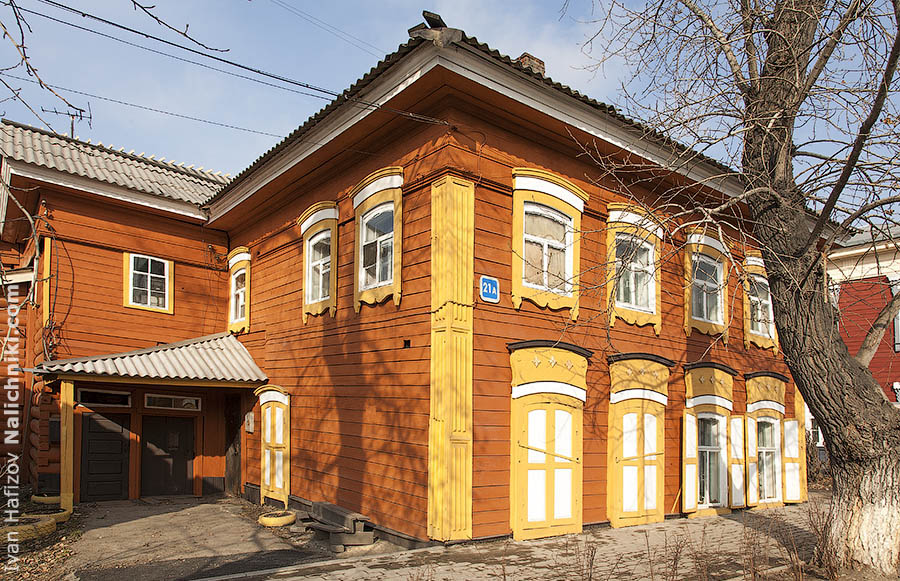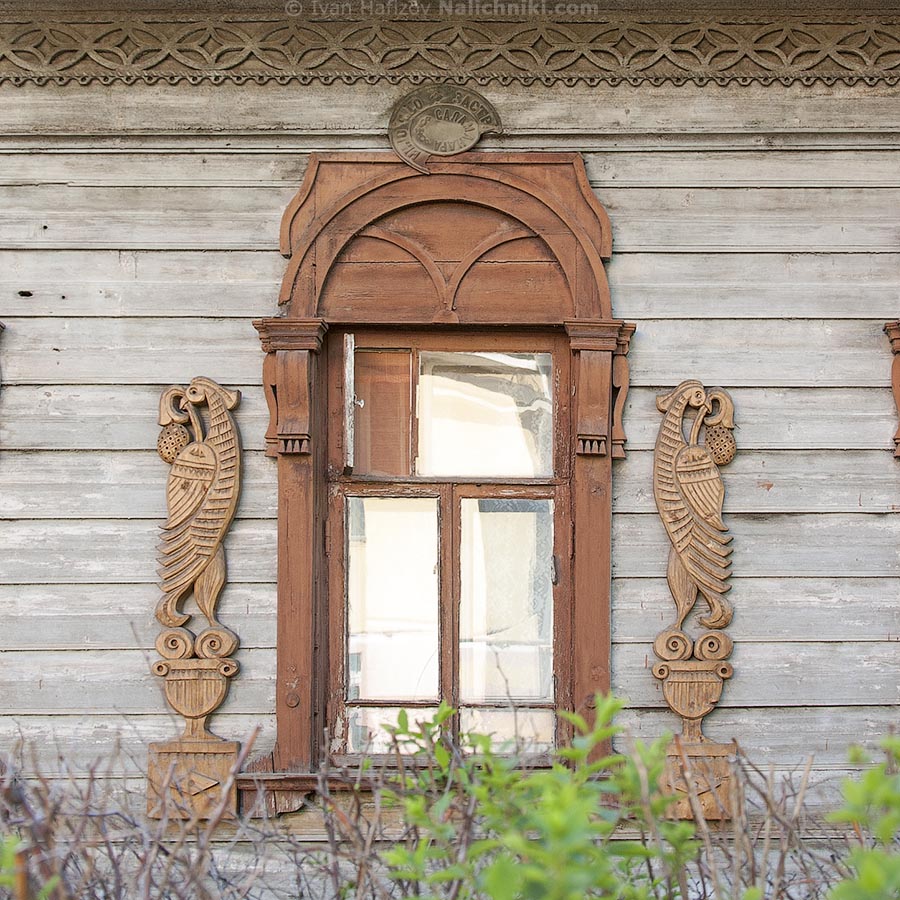Today, please enjoy this most unusual house with most unique window frames! Its owner, as if on purpose, broke all my ideas on the geography of wooden carving:)
Bet, you will hardly find anything like this one :) from Kimry
Виртуальный музей резных наличников
Русские деревянные резные оконные наличники. Всё о них.

My today story is about a book titled Relic Wooden Houses of Barnaul. The book (or, rather, a photo album or a catalogue) tells of 64 wooden houses of Barnaul, every one of which is either a regional or a national relic. It offers several photos of every house taken both in our times and in early XX century and gives its history.
The most interesting is…
Continue reading “The book “Relic Wooden Houses of Barnaul””
Just now, I am picking window frames for the next set of card I am going to send for printing soon. The town of Rostov Veliky will be one of the places presented there. And this window frame with six (!) dragons will certainly be included!
By the way, six dragons are a kind of record, as I never had seen window frames carrying more!

Look at this head-turning house from Irkutsk.
It was built in late XIX century and is said not to change its color since then and always being this bright.
Though general rule is very different colors prevail for window frames (and almost all houses) of this city!
And here a logical question arises.
What drove people to select a color for their houses and window frames?
Say, window frames in Myshkin, Yaroslavl Oblast. are deliberately bright, as this attracts tourists. I do not know the way that had looked before. I only can suppose it was just like throughout the region, i.e. monotonous, either white or green ones.
Есть еще один случай сознательного выбора единого цвета покраски домов – в МMichurinsk, Tambov Region, is one case of almost monochrome painting. There a son behind it is said to be very plain: in Soviet Union times, local locomotive overhaul plant was the only place to find paint, and, surely, green was the only color available, and the result is almost all houses in the town are green ones.
Tomsk and Samara never made much fuss about painting – they just left their houses and window frames as they were, though I do not know why. And can you recall any village or town having some certain reason for painting their houses in one and the same color?
 In addition to an unusual shape and two Phoenixes on its sides, this window frame from Kostroma has a noticeable metal plate above it. The plate belonged to Salamandra, insurance company existed in Russian Empire. Unfortunately it does show the year. I saw only few plates like that one, all of them dated back to mid XIX century.
In addition to an unusual shape and two Phoenixes on its sides, this window frame from Kostroma has a noticeable metal plate above it. The plate belonged to Salamandra, insurance company existed in Russian Empire. Unfortunately it does show the year. I saw only few plates like that one, all of them dated back to mid XIX century.
Companies dealing with fire insurance worked in Russia since early XIX century (1827), first in Tula and Poltava, and later in many other places.
TheSalamandrawas launched in 1848, and was one among the top ones.
By the time when Soviets came to power, 150 Russian towns had mutual insurance companies. It is interesting they did not cover any foreign risks but kept all their capital in Russia and invested it into upgrade and development of fire extinguishing systems, systems of early warning and improvement of their places.
West, and especially south-west of Moscow region has just a few houses of more than 60 years old, and I did not expect I would see anything interesting. Yet, it was a pleasant surprise for me to know the town of Naro-Fominsk has them and they are well cared. I was much more pleased to notice some elements of local window frames are very recognizable. Which means the tradition of Naro-Fominsk window frames has survived the Great Patriotic War and still lasts.
According to Wikipedia, mezzonines often have balconies; this fact can hardly be argued, as it knows everything:))) Yet have you seen many wooden houses having this construction of the balcony?
I was fairly surprisedwhen I had seen it in the town of Kineshma! I should do some rustling-up in my archives, but I am afraid I never saw anything like that before. And in the deep of my heart I cherish a hope that one day I will set up a balcony exactly like this one:)))
Not long ago I had shown wooden house from Yekaterinburg, and today have a reason to offer you one more.
When I had found this house Yekaterinburg, its surrounding surprised me a little bit; modern multi-storey buildings neighbored this pearl of wooden architecture. How could it survived there? I didn’t find a memorial plate, yet the house is just gorgeous and obviously had been far more attractive in its early days.
It was my immense luck when I had found the clues to all my questions in the book titled Wooden Buildings of Ural.
Continue reading “A disassembling and shifting of an old detached house from the centre of Yekaterinburg city.”
Today, I am going to tell you about a wonderful book on wooden carving. The book titled A Town Unique in Russia had been published 20 years ago in Vologda
This is how it begins: “Literature on regional studies offers just a fragmentary information about wooden buildings of Vologda. No work focused on the subject has been written so far, except of a booklet published some years ago… ”
If this one had not been printed, this beginning would remain valid until now! With the only difference that now much less wooden houses of Vologda can be shot.
If this one had not been printed, this beginning would remain valid until now! With the only difference that now much less wooden houses of Vologda can be shot., в 93-м.
The book has many photos of houses, streets and parts of wooden houses: balconies, bows, gates and window frames, for sure!
Wooden architecture is described comprehensively: the book gives its history and development, show art nouveau replaced classicism, how the first wave of ravages had flown over the place in 1930s, and how the second one followed in 1960s…
But the most precious part of this book is its map with addresses and descriptions (in some cases even with photos and drawings ) of 148 (!) wooden houses Vologda had had by the year of 1991!
For sure, this book will be with me, when I will go to Vologda! Other books on wooden houses are available here: Books.